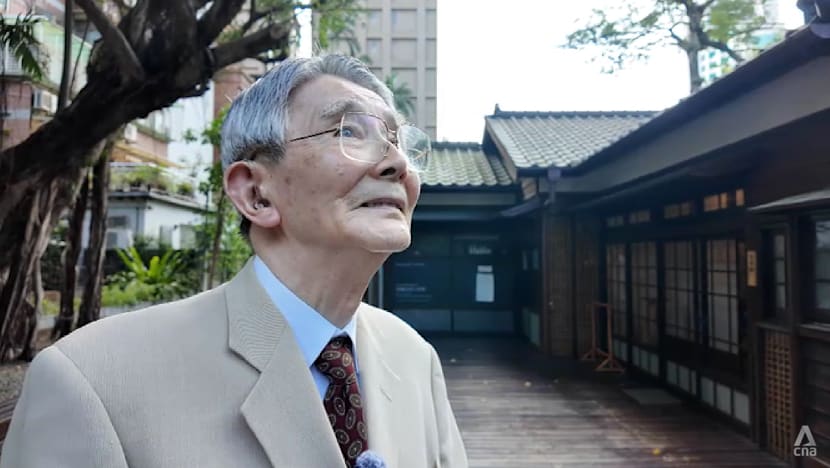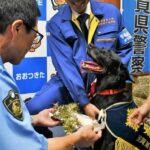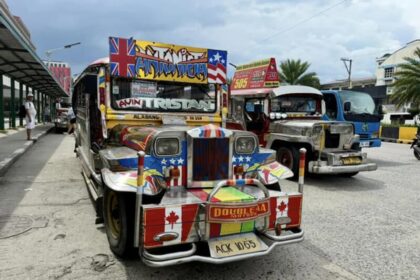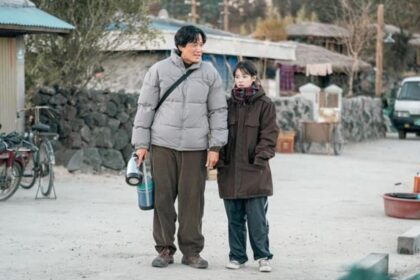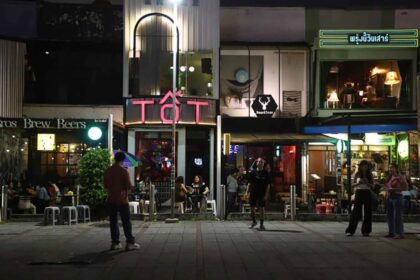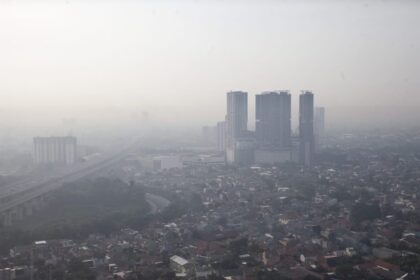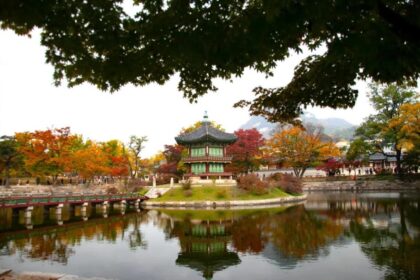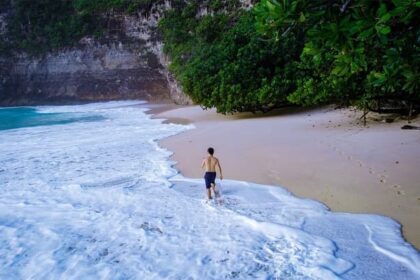Streets that remember, voices that still speak
Walk through central Taipei and the past is visible in brick and wood. The Presidential Office Building, wide boulevards, and clusters of wooden houses recall a time when the city was called Taihoku and one in three residents was Japanese. For half a century from 1895 to 1945, Taiwan was Japan’s first overseas colony. Schools taught in Japanese, neighborhoods were laid out to a metropolitan plan, and state firms dominated sugar, camphor, and other key industries. That architecture and infrastructure still anchor daily life, but living memory is fast thinning. The last surviving people born in Taiwan to Japanese families, known as the Wansei, are now in their 80s, 90s, and beyond. Their stories, and those of Taiwanese who grew up under the Rising Sun, capture both progress and pain.
- Streets that remember, voices that still speak
- Who were the Wansei and why they had to leave
- Life under colonial rule, between assimilation and resistance
- War on the home front
- After 1945, empty houses and new arrivals
- Taiwanese in Japanese uniform
- Grief without a monument
- Memory on screen, books and galleries
- Preserving and reusing colonial era homes
- How the last witnesses shape the story
- The Bottom Line
Among them is Hisashi Niimoto, now 93, who was born in Taipei to a family tied to railways and sugar. His grandfather arrived in 1896 to help build the rail lines that stitched the island together. Niimoto remembers the excitement of a modern city and the fear of war. He is part of an estimated 200,000 Wansei who were repatriated after Japan’s surrender, a group that left Taiwan carrying only what they could. Many still speak of the island as a second home decades later.
That sentiment coexists with harsh reality. Japanese rule brought assimilation, police control, and crackdowns on uprisings like the Tapani incident of 1915. Thousands were killed and many were arrested. World War II brought Allied air raids that turned districts into craters. The island then passed to the Republic of China, the Kuomintang government requisitioned ex colonial property, and a new wave of refugees from the mainland filled the empty homes. Memory, like the cityscape, became layered and contested.
Who were the Wansei and why they had to leave
Wansei is a Japanese term for people of Japanese descent born in Taiwan during the colonial era. They included children of settlers as well as those from mixed families. By 1945, roughly half a million Japanese settlers lived on the island, grouped in official categories that also divided Han Chinese as hontojin and Indigenous peoples as banjin. Surveys late in the war suggested that many Japanese residents would have preferred to remain. That did not happen. Between 1945 and 1949, almost all were sent to Japan in organized repatriation, often in haste and without assets.
In Japan, Wansei families discovered that home had become a foreign land. Many spoke with accents from Taiwan and were treated as outsiders. They had grown up under colonial schools and sometimes enjoyed higher access to education, which later helped them find careers. Even with that advantage, they faced a tough start in a devastated country. Wansei networks formed, memoirs appeared, and reunions were held to keep the memories of Taiwan alive. Elder Wansei still call Taiwan their beloved birthplace and visit when they can, even as age narrows that window.
Life under colonial rule, between assimilation and resistance
Japan secured Taiwan after victory over the Qing in what is known as the First Sino Japanese War. Taipei became the colonial capital, with Japanese bureaucrats and engineers guiding the island as a model colony. Early years saw armed resistance put down by 1902, followed by strong police rule and campaigns to make local people into imperial subjects. The government controlled major industries and pushed public health and sanitation. Urban districts were re planned, railways expanded, and ports improved to serve military and economic aims.
Education, language and identity
Schools taught in Japanese and promoted loyalty to the emperor. Primary education for Taiwanese was limited at first and only became mandatory near the end of the war. Language policies encouraged families to shift from Minnan, Hakka, and Indigenous languages to Japanese. Young Taiwanese adopted Japanese names, and some identified deeply with the empire. Others resisted or pursued new outlets in literature and culture to express Taiwanese identity.
Railways, sugar and the city
The colonial state poured resources into rail lines, dams, and roads. Railways allowed cane to move quickly from fields to mills, feeding a sugar boom that tied Taiwan to markets across Asia. Japanese corporate groups and state monopolies dominated extraction and processing of sugar, camphor, salt, and other goods. The shape of Taipei changed along with the economy. Government offices, schools, and Japanese style homes appeared in clusters. One such area, now part of Zhongzheng district, housed civil servants in streamlined wooden residences that still survive in pockets across the city.
War on the home front
Daily routines crumbled as World War II reached Taiwan. Allied bombers targeted the island’s cities and infrastructure, including government buildings and rail hubs. Niimoto was a teenager in 1945 when a major raid struck Taipei on May 31. He and classmates were working across the Danshui River when the alarms sounded and explosions shook the city. He later told reporters that the earth seemed to turn upside down as a 500 kilogram bomb hit near their shelter and left a deep crater.
Niimoto recalled the moment in detail, drawing on lessons that had taught him to honor military service even as the war was going badly. After the raid, he told his teacher he wanted to become a soldier and was sent to a bicycle messenger unit. He was still too young to serve in combat, and Japan soon surrendered.
Speaking of his birth island, Niimoto said from Tokyo that he never forgot the place where his grandfather and father built their lives. He still calls it his birthplace.
‘Taiwan is where my grandfather and father lived. It is my birthplace.’
Another Wansei, Susumu Ito, was four when his family joined deportation convoys after the raids. He remembered soldiers loyal to Chiang Kai shek standing guard as residents lined up to leave and a tense walk to board a ship in 1947. The family departed with little, not knowing what the future would hold.
‘My father tried to take me to church by bicycle. Along the main road, there were soldiers of Chiang Kai shek. They were watching the area. It was tense.’
After 1945, empty houses and new arrivals
When Japan lost the war, its officials and families were ordered out. Homes and public facilities left behind were taken over by the new authorities. For a short time, some neighborhoods of Japanese style houses stood empty. That changed in 1949 when the civil war on the mainland drove more than a million people to Taiwan. The vacant homes provided shelter for waves of refugees, military officers, and bureaucrats. Many structures were later abandoned or demolished as their tenants passed away and the city rebuilt.
Preservation gained traction only recently. Conservation advocates, including researchers at Academia Sinica, have cataloged the architecture and pushed to save surviving clusters. In some cases, a bidding system supports careful renovation, with tenants paying rent to maintain the property. Niimoto’s former Taipei home lay in ruins for years but later reopened as a cafe. Others have not been as lucky. Susumu Ito returned to find one family home demolished despite petitions. Another was approved for preservation but remains empty and decaying.
Huang Chih huei, a scholar who has worked for two decades to conserve colonial era houses, argues that the structures matter as public history, not just private memory. He says the buildings tell a story about Taipei’s evolution from a colonial capital to a modern city.
‘It is not just about family history. It is about Taiwan, Taipei’s history until today. It is one page that cannot be omitted.’
Taiwanese in Japanese uniform
The Japanese language generation included Taiwanese who identified as Japanese and entered the imperial military. Records suggest more than 200,000 Taiwanese served. An estimated 30,000 never returned. For some, service brought a sense of belonging. Others saw it as duty or necessity in a war they did not choose.
Lu Rong mao, who also used the Japanese name Shigeo Miyakawa, remembered colonial officials as helping poor families, and he came to believe he should serve the empire. Another veteran, Yang Fu cheng, enlisted in 1943. He worked on supplies in Singapore and said he was treated like any other Japanese soldier. He later returned to a very different Taiwan and lived through the February 28 Incident and White Terror. He spent seven years in prison during the long era of martial law.
Yang has spoken about the bonds and trust he felt in uniform, and how that identity was challenged after 1945.
‘I thought that for a Japanese citizen, if Japan is at war, then I should participate. I immediately changed my name to be in Japanese.’
Grief without a monument
Masao Go, now 98, was one of the youngest Taiwanese to enter a Japanese military training school in 1944. He had wanted to become a suicide pilot, a path closed to eldest sons. After surrender, he was captured by Soviet forces and sent to a labor camp in what is now Kazakhstan. Japan’s health ministry estimates that 37,000 soldiers from the Japanese army were forced to work there and around 1,500 died. Go returned to Japan in 1947 carrying grief and unanswered questions about the Taiwanese who never came home.
He searched for memorials to Taiwanese who died in service and found little. Last year he asked Eikan Mizutani, the chief resident abbot of Zen Mazan Shinsyouji Temple in Yokohama, to erect a cenotaph. The abbot agreed, and the monument opened this spring.
Mizutani explained that Japanese classrooms do not teach much about Taiwanese soldiers. He saw the memorial as a way to bring their story to the wider public.
‘It was not taught in Japanese education. So I was even more motivated to build the cenotaph. I want the general public to know about Taiwanese soldiers.’
Memory on screen, books and galleries
As martial law ended in 1987, subjects suppressed for decades returned to public view. That included frank treatment of Japanese colonial history, Indigenous experiences, and the long arc from empire to White Terror. Filmmakers and writers have since explored this terrain in very different ways. Wei Te sheng’s Warriors of the Rainbow: Seediq Bale centers an Indigenous uprising against Japanese rule and dives into the Seediq worldview, including the principle of gaya, to confront the loss of dignity under occupation. Other films tell stories of child laborers in naval arsenals, or portray daily life near the end of the empire through satirical or tragic lenses.
Cape No. 7 sparked debate for its nostalgic tone about a Japanese teacher’s relationship with a Taiwanese woman. KANO celebrated a multi ethnic baseball team formed under colonial rule, a story embraced for its portrait of teamwork across lines of language and origin. Documentaries like Wansei Back Home follow aging Wansei as they revisit childhood neighborhoods, pushing audiences to sit with contradiction. Some works are accused of romanticizing the colonial period. Others highlight exploitation, discrimination, and violence. Together, they show how memory is not fixed but negotiated across generations.
Taiwanese art also carries this blended past. Lin Yu shan, a master of ink wash painting, grew up under Japanese rule and fused Japanese training, Western techniques, and local subjects into a distinct Taiwanese style. Wansei painter Tateishi Tetsuomi preserved Indigenous arts and customs through his portraits and village scenes. Much of his work was lost during repatriation, which only heightens the sense that a cultural world was uprooted and scattered.
Preserving and reusing colonial era homes
In Taipei’s old Showacho quarter, around 50 Japanese style houses remain. Built during the Showa period, the quarter lodged colonial officials in neat wooden compounds. After the Pacific War, the Kuomintang took over many empty structures and assigned them to officers, civil servants, and civilians fleeing the mainland. This left a complex property legacy and a wave of decay once those tenants passed on. Today, renovation efforts fight time and development pressure. Where restoration works, the houses become cafes, cultural spaces, or community hubs that link residents to a layered past.
Across the city, the homes that survive reveal a careful carpentry tradition, climate smart design, and an urban history that includes colonial power and civic life. Conservationists stress that saving these buildings is not nostalgia for empire. It is an attempt to keep intact the traces of how Taipei grew, how families lived in different eras, and how the city can show respect for all who built and shaped it.
How the last witnesses shape the story
When the Wansei speak, they blend the personal with the historical. Niimoto remembers yokan sweets tucked into a bag on the voyage out, a taste of childhood that outlasted war. Ito remembers a tense ride past soldiers to the quay. Yang remembers a commander who trusted him with keys to a vault. Go remembers friends who never came home. These fragments help explain why some Taiwanese families still hold warm feelings for teachers and doctors they knew, while others remember oppression and loss. Many older Taiwanese who were educated in Japanese remember a sense of order and public health, yet they also remember bans on language and strict police control.
Academic voices offer a framework for this divide. Some point out that democratization made room for reexamining history and for debates over whether to preserve colonial buildings or topple them. Others argue that White Terror trauma softened memories of Japanese rule by contrast. Still others say nostalgia should not obscure the very real suffering under an imperial system. The last generation to carry direct memories is leaving the stage. What they pass down now will shape how the island learns from that era.
The Bottom Line
- From 1895 to 1945, Taiwan was Japan’s first colony, reshaped by railways, schools, and state industries while facing tight control and repression.
- The Wansei are Japanese born in Taiwan during colonial rule. Most were repatriated between 1945 and 1949 and struggled to adjust in war torn Japan.
- Allied air raids, including a major strike on Taipei on May 31, 1945, killed thousands and destroyed key infrastructure.
- After 1945, the Kuomintang requisitioned former Japanese homes. An influx of mainland refugees in 1949 filled many empty houses.
- More than 200,000 Taiwanese served in the Japanese military. About 30,000 did not return, and their memory now includes a new cenotaph in Yokohama.
- Preservation of Japanese era houses, especially in areas like Zhongzheng and the old Showacho quarter, has grown but still faces demolition pressure.
- Taiwan’s films, books, and art capture diverse views of the colonial period, from resistance in Seediq Bale to the teamwork of KANO and Wansei memoirs.
- As the last witnesses age, Taiwan’s conversation about this period hinges on how families, scholars, and communities choose to remember and preserve the past.


